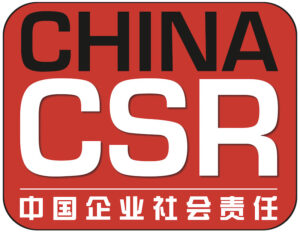Savings in costs and material together with reduced emissions and a faster project turnaround are reported on completion of the southern half of the Tongguan to Xi'an section of the Lianhuo Expressway improvement and widening scheme, as a result of using "Green Mix" cold recycling foamed bitumen technology from Wirtgen China.
This is the first expressway in China which has been improved and widened on large scale using "Green Mix" foamed bitumen cold recycling technology from Germany-headquartered Wirtgen China. As the existing pavement material was reused as efficiently as possible, the cost saving was around CNY 28,000,000. This provides a reference example for highway overhaul, improvement and widening in Shaanxi province with clear economic efficiency and environmental benefits from this project.
A traditional pavement overhaul focuses mainly on substitution and strengthening. Substitution results in higher costs, longer time duration, and a more complex project. A large quantity of milled material would not be reused properly, resulting in waste and pollution. Strengthening has the drawbacks that pavement bearing capacity can not be meaningfully increased and pavement defects can not be effectively eliminated. With the advent of the 21st century, many high-class roads need to be maintained and repaired or improved — it is reported that around 12% of pavement in China needs to be overhauled every year — and this requires removing a total quantity of around 2,200,000 tons of existing pavement material. Recycling of this material and reusing it in new construction and repair of pavement, is not only be environmentally friendly, but also results in major cost savings. Especially in western area of the country, studies show that reusing large quantity of existing pavement material, will reduce pollution, conserve water and soil, and allow the building of more roads with less investment.
Recently foamed bitumen technology has become more and more popular, both in China and abroad. "Individual study of foamed bitumen cold recycling" was supported by technology finance from Ministry of Finance, and was declared to be a technology development project for Shaanxi province. When this study is finished, the annual cost saving on material through recycling is calculated to be CNY1.500 billion.
In "Green Mix" foamed bitumen technology water is injected into hot bitumen, making it expand and become bitumen foam. The foam will settle down after a short time. The foam bitumen becomes millions of tiny particles spread over fine material and forms a slurry. After mixing and compaction, it will bind the coarse particles and make the pavement course stable. Compared to traditional methods, the advantages of foamed bitumen technology are reported to include: long time storage of mix, higher shear strength, and less sensitivity of the mix to water.
With regard to energy savings, foamed bitumen has a number of very strong points. According to Li Jingde, the chief director of quality inspection center of contract six, Xitong expressway improvement and widening project of number two highway bureau of China Communications Group, in traditional road design, the bitumen content of the asphalt base course is 3.4%, and for the binder course it is 4.4%. When using foamed bitumen, existing material will be reused extensively, saving crushed stone. When paving on hard shoulders, it replaces binder and base courses with a bitumen content of only 2.1%. Furthermore, foamed bitumen recycling requires less labor and investment in machines. It cures naturally and this can be finished within two days in the summer time. In comparison the traditional water spreading curing method needs seven days.
As a technology for new roads, foamed bitumen recycling has been tested and applied throughout the country. But, for expressway improvement and widening like Xitong expressway project, there is no experience or reference data. Xitong expressway improvement and widening is the first project in China to use this design and construction and to benefit from major savings in cost material and emissions.

